
What does a male stickleback fish do to attract a female? Review this data to find out.
- Subject:
- Mathematics
- Material Type:
- Activity/Lab
- Data Set
- Lesson Plan
- Provider:
- Data Nuggets
- Author:
- Data Nuggets
- Date Added:
- 10/24/2022

What does a male stickleback fish do to attract a female? Review this data to find out.

Discuss independent and independent variables as you learn about relationships between coral, algae and urchins. Look for patterns and determine if there are any relationships between these different sea creatures by reading or creating your own graphical representations.

Integrating Visual Art and Math
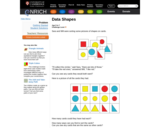
This activity asks students to recognize differences in shapes and sort them. They are given a set of 15 shape cards that they can sort by the criteria of color, size and shape. Ideas for implementation, extension and support are included along with a printable sheet of the cards.

This task asks the students to solve a real-world problem involving unit rates (data per unit time) using units that many teens and pre-teens have heard of but may not know the definition for. While the computations involved are not particularly complex, the units will be abstract for many students.

This lesson will be creating a digital story focused around standard,Data and Analysis (DA):Computing systems exist to process data. The amount of digital data generated in the world is rapidly expanding, and the need to process data effectively is increasingly important. Data is collected and stored so it can be analyzed to better understand the world and make more accurate predictions.Standard 2.DA.1Demonstrate how to store, copy, search, retrieve, modify and delete information using a computing device, and define the information stored as data. (Practice 4: Developing and Using Abstractions)Students will demonstrate how to create, modify, and save projects using the devices, platforms, applications, and software available. Data can be images, text documents, audio files, software programs or apps, video files, etc. The information is specific to data, not text within a single text document.

Database Design - 2nd Edition covers database systems and database design concepts. New to this edition are SQL info, additional examples, key terms and review exercises at the end of each chapter.
Students will learn about the functions and purposes of responsible dating including dating behaviors, values, responsibilities and refusal skills.

In this video segment adapted from NOVA, scientists search for carbonized remains of plants preserved in lava flows to find out how long it has taken rain forests on Hawaii to regenerate after a volcanic eruption.
Students will be able to explore their feeling on love. They will first write down their feelings. Then as a class talk about love and infatuation, and what the differences are. Students will learn about the Ladder of Love and write a love poem of their own.
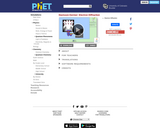
Simulate the original experiment that proved that electrons can behave as waves. Watch electrons diffract off a crystal of atoms, interfering with themselves to create peaks and troughs of probability.

This lesson introduces the concept of cause and effect with Trinka Hakes Noble's books about Jimmy and his boa constrictor. Each lesson begins with the teacher reading a new story about Jimmy and his boa and the chaos they bring to each place they visit. Class discussions about each event and its cause are followed by tasks for the students to help illustrate understanding of the concept. Students create cause-and-effect pictures, puzzles, and flow charts as they explore the genre. As a culminating activity, students write their own book with causes and effects, which are assessed with a rubric.

Explore sites around the world connected with extinction events.
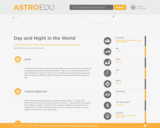
This activity allows pupils to learn the difference between diurnal and nocturnal animals, understand that when it is day here, it is night on the other side of the world, and that it is light when the Sun comes up and it is dark when the Sun goes down. At the end, pupils build a model of the Earth and can experiment with day and night.

This resource is to support teachers and educators to run Day of AI activities in their classrooms through curriculum packages and teacher training, all of which is available at no cost to participants.
Developed by leading faculty and educators from MIT RAISE, the curriculum features up to four hours of hands-on activities that engage kids in creative discovery, discussion, and play as they learn the fundamentals of AI, investigate the societal impact of these technologies, and bring artificial intelligence to life through lessons and activities that are accessible to all, even those with no computer science or technical background.
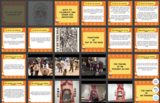
The National Museum of the American Latino has created this resource as a guide to learn more about the Day of the Dead. Use this Learning Lab as a starting off point to celebrate with your community, family, and/or students. Our on-line learning kit includes general information and the history of the tradition. Smithsonian collections, video resources, music, and hands-on activities for in-school or at-home learning are also included.

A testimonial by a women regarding her work in a sweatshop at the turn of the 20th century.
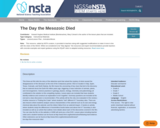
This three-act film tells the story of the detective work that solved the mystery of what caused the disappearance of the dinosaurs at the end of the Cretaceous period. Shot on location in Italy, Spain, Texas, Colorado, and North Dakota, the film traces the uncovering of key clues that led to the discovery that an asteroid struck the Earth 66 million years ago, triggering a mass extinction of animals, plants, and microorganisms. Science practices in geology, physics, biology, chemistry and paleontology all contributed to the solution to this compelling mystery. Lesson plans are included that have students identify evidence and construct an explanation to tie it together. Summary questions are included at the end and a class discussion is recommended. (This activity will be the only one evaluated in this review.) Another resource is Finding the Crater where students visit different K-T boundary sites. There are also lessons where students analyze various characteristics of the asteroid such as its size and energy, chemical data about the asteroid, and the iridium fallout from an asteroid impact. A hands-on activity where students study the differences in foraminifera fossils below and above the K-T boundary is also included as well as an article that outlines more details about each of the discoveries covered in the film. You can view the film on the website or HHMI will send you a free DVD. Lesson plans including teacher notes and a student handout can be found at http://www.hhmi.org/biointeractive/following-trail-evidence.
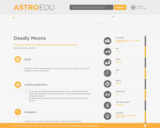
From Earth’s moon to Europa, our solar system is filled with interesting set of natural satellites. Through art and science, children learn about moons of our solar system with the Deadly Moons activity.

Sixteen dancers from across the country, representing a range of dance styles, move as one being, with each dancer's moves flowing naturally into the next. Poet Chinaka Hodge narrates each dancer’s steps from all around the United States as we shelter-in-place. Inspired by Mitchell Rose's Exquisite Corps chain letter, each dancer begins in the last pose of the dancer before passing the movement.
If Cities Could Dance is a Webby Award-winning video series featuring dancers from cities across the United States. Step into the shoes of dancers from across the country who dare to imagine what it would look like if their city could dance.
Extension Project: Give your middle and high school students the opportunity to create and publish original dance videos with an accompanying artist statement with the KQED Youth Media Challenge: If Schools Could Dance.